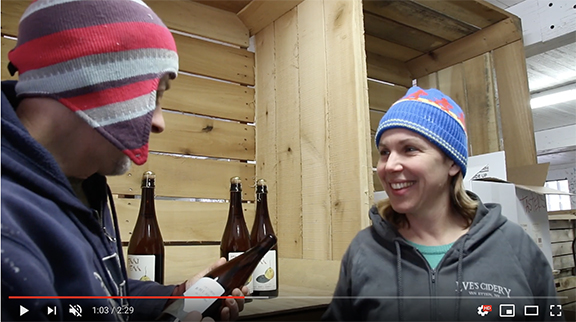
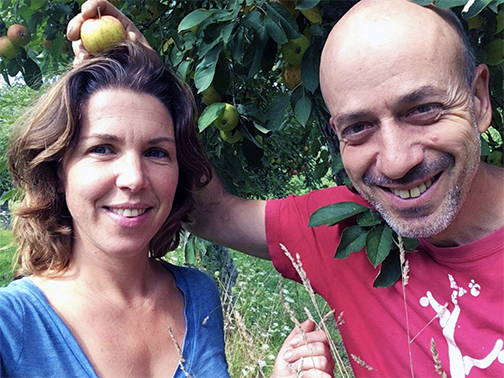 Christopher Barnes: So Autumn, you've been making cider for a very long time. How did you first get into cider?
Christopher Barnes: So Autumn, you've been making cider for a very long time. How did you first get into cider?
Autumn Stoscheck: I got into cider basically when I was about 19 years old and I was working on an orchard during the day and waiting tables at night. I was falling in love with orchards and just being sucked into that world, the romance of orcharding.
At the same time I was being exposed to good food and good wine. Right around that time, I saw in a trade magazine, an orchardist trade magazine, that Steve Wood from Farnham Hill Cider in New Hampshire was on the cover as the fruit grower of the year. And it had an article that was basically describing this project that he had undertaken to plant English cider varieties in his orchard in New Hampshire.
This is in the late nineties. At that time, this was mind blowing. I mean, the idea that there were varieties that had been selected specifically for their fermentation qualities was something I had never heard of and most people hadn't at the time. That was sort of the beginning of a journey that's taken the past two decades.
Talk a little bit about where artisanal cider is right now. You've been doing this for a long time. Cider has come a long way, but it's still nowhere near where big beer is, or even craft beer.
Yes, I mean, it's really complicated and I think my own thinking has changed on it, even just in the past sort of five years, because I think all of us that have been doing this for a while, we started selling cider on the street in New York at the Union Square Greenmarket where people would come up to us and they'd be like, "What is this?" And we'd be like, "Try it, try it." And they'd be like, "Cider? Does it have alcohol in it? What?"
But they would try it and they would like it and they would buy a bottle. And that was kind of this beginning. I think the few of us that were selling cider and making cider at that time sort of envisioned, we'll get written up in the New York Times and then people will know about cider and then it's just going to take off like a big steam roller! Or something like that.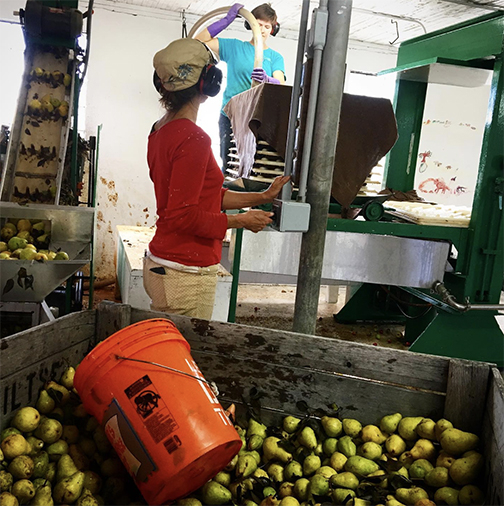 I don't think I'm alone in having this thought, but that gold rush, I think that's not a realistic thing. I think you want that as a person who has a business or is making a living. But the reality is, cider is very new here and you don't take something and turn it into a thing in two decades, right? It's going to be a long process. So I'm in a place where I'm taking the long view now.
I don't think I'm alone in having this thought, but that gold rush, I think that's not a realistic thing. I think you want that as a person who has a business or is making a living. But the reality is, cider is very new here and you don't take something and turn it into a thing in two decades, right? It's going to be a long process. So I'm in a place where I'm taking the long view now.
I think one of the things that's the most exciting for me about where cider is at now, is that first of all, we have an amazing group of colleagues. For example, right here in the Finger Lakes, people who are really taking their craft seriously, who are competing with each other and pushing each other to do better, but at the same time sharing knowledge, and out of that is sort of emerging this cider that's sort of settling into its sense of place.
And that's inspirational to me and very exciting. And I think the other thing about cider and where cider is at now is that for the first time we have people who basically came of age as drinkers, turned 21 and knew about cider all along instead of what it was like 20 years ago when it was like, "You're a beer drinker or you're a wine drinker. And you were...? Oh, what's this weird thing you're telling me about?" You know? So that's really different because those people have just sort of accepted the fact that cider exists in the first place. They're not enamored with the sort of novelty of it, so they're a little bit more serious and discerning and demanding about it. And I think that's exciting for producers.
What kind of apples are you working with in your artisanal cider production?
There's a couple of different groups of apples that we're working with. One of the groups is apples that are native to New York. And I don't mean "native" in the sense that it's a native plant. It's actually a naturalized plant. Malus domestica is a European apple species, but native in the sense that 200 years ago, when people were much more excited about horticulture and much more excited about food and fruit, there was a time when every county had its own variety named after it. This is when people would go out into the hedge rows and find this astonishing apple tree that produced wonderful red fruit that you could make cider with, or something like that. And then they brought it and they grafted it and then they told their neighbors and then people in the little area would start growing Chenango strawberry or what have you.
In New York state there's actually a wealth of these varieties and people chose them at a time when they were doing a lot of things with apples. They were cooking with them, they were making vinegar with them, they were making cider with them. A lot of people were drinking a lot of cider back then. So that group of apples I think of as sort of New York apples or native New York apples, like Northern Spy, Golden Russet, Newtown Pippin. So that's one group.
Another group of apples that we are working with and very much devoted to are European cider varieties and specifically a lot of French and English bittersweets. And this is a class of apples that has a very, very specific set of sensory characteristics. They're high in tannin, they're high in sugar, they're low in acid and they have flavors and aromas that are just unlike anything in other apples.
Another group of apples that we're working with is, again going back to these apples that are sort of naturalized and native, but this time with our own eyes, so looking for apples that are disease resistant, looking for apples that are high in sugar, looking for apples that really excite us flavor-wise and then bringing them back to the cidery. Experimenting with them and learning from them and possibly grafting some of them into our own orchards.
So yes, I think that's the three main categories. Talk a little bit about your passion for organics.
Talk a little bit about your passion for organics.
Our orchard is a certified organic orchard. It's one of the very few in New York state and a handful in the Northeast. We live in a very humid climate here and so the conventional wisdom is that it's almost impossible to grow apples organically in the Northeast. It's been a long journey. We haven't had a playbook to sort of follow. A lot of what we're doing in our orchard now has been through trial and error and we've made lots of errors, have lots of mistakes.
But for me personally, the decision to become organic was really about my children and this place and the place that I was working at being our home. Apples, a lot of people wouldn't really want to think too deeply about how apples are grown. They're very chemically intensive.
Now that said, one of the things that has really evolved for me in this 20 year process of growing apples and making cider, is this realization that the way that you think about apples and growing apples as a dessert fruit grower, which is how I got into growing apples in the first place and which is what all of like the research and all of the mindset about the horticulture that you're doing, the spray program that you're following is geared towards, it's actually really different than growing apples for cider. Right? Because if you're a farmer and you're making your profit out of the total volume that you produce on your acreage and the cosmetic beauty of the fruit, because you get paid more for the redder fruit and bigger fruit and so on and so forth, you have those one set of objectives. And to me, I don't think that those objectives are necessarily compatible with me growing apples that make the highest quality juice for fermentation. And one of the things that we've really come to believe is that an organic system is sort of harmonious with those goals.
And you took a little break to work in a winery. How did that happen and what did you get out of it?
In 2018, I took a sabbatical. I was really feeling burnt out from being self-employed for the past 20 years. And just always talking about apples and always talking about cider, and sort of coincidentally at the time, my friend Rick Rainey who is the owner of Forge Cellars, which is just a little hop, skip and a jump away over on Seneca Lake, was talking to me about how he needed a vineyard manager and he was all excited about doing a better job at grape growing than what's being currently done in the Finger Lakes. I was always kind of jabbing him, "Yeah, you should do organic. It's easy, look at me!" Joke, joke. But somehow it just sort of came together and we agreed that I would come and manage his vineyard for a year and try to develop an organic management program for his Pinot Noir vineyard.
What I learned out of it was that grapes and apples are really, really, really similar plants and also really different. But the basic idea is the same, that you have this perennial plant that grows in a place its entire life and how you grow it and how you treat it and how you talk to it and where it's growing and all of that stuff profoundly affects the beverage that you make out of it.
Both of those crops are very challenging to grow in this climate, especially organically, but that it is possible and I think it's the new frontier and I think that it's going to get figured out. There's a lot of people who want to figure it out in the Finger Lakes. And I suspect that in 10 years, a lot of people are going to be growing organically here, which is good news for consumers.
So Autumn, many people are not familiar with artisanal cider. How would you describe artisanal cider?
I think artisanal cider is cider that is made with care with quality ingredients, which should basically only be apples, and is well-made, has a craft behind it, isn't just I'll ferment anything and shove it in a bottle.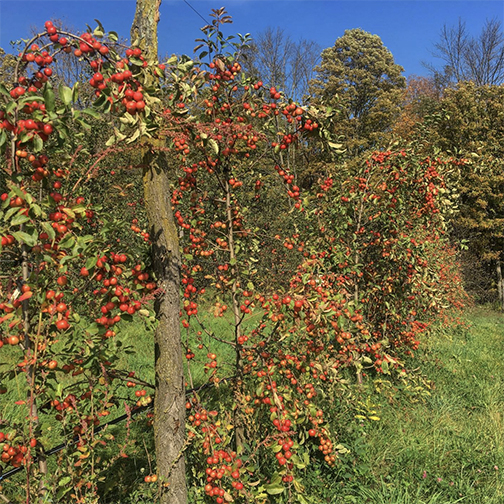 And how would you describe the taste of an artisanal cider versus say like a commercially-made cider that somebody may get in a big grocery store?
And how would you describe the taste of an artisanal cider versus say like a commercially-made cider that somebody may get in a big grocery store?
Well, in the United States you can call something cider and put it on the label as long as it has 51% apple or apple-based products in it.
So right off the bat, you can probably taste that it's 49% water. You can also put an entire host of chemical additives and flavorings and something and the consumer will never know from the labeling. But if you have any kind of sophistication to your palate, you can probably taste artificial apple flavorings or malic acid or grape tannins. Or, since a lot of these ciders are made with concentrate or supermarket culls of Fuji and Gala that have no flavor to them whatsoever. After they've been fermented, they're often flavored with all sorts of flavorings like hops and hibiscus and habanero peppers.
So the difference may be that kind of experience versus something that has a lot of depth and character and speaks to the fruit that it was made from.
Talk a little bit about a couple of the different ciders that you make.
One of our orchards sites is a sort of steep site that's perched on a shale ledge on a hill overlooking our little valley. In that orchard, we have about 40 different varieties planted and every year we kind of take the best cider that was made from the field blends of those different varieties and bottle it in a single orchard bottling called Albee Hill. It's a still cider, which means we ferment it, we mature it, and then we put it in the bottle and that's kind of it. And it's really just, it is what it is. It doesn't have anything extra to stand on it and so it's very pure. I think it expresses some of the aspects of cider's versatility that I love the most, which is that it's low in alcohol, it's about 7% alcohol, yet when you pair it with food, you realize that it sort of has this character that can match with food. It's got lots of acidity so it's really refreshing. And yet it's got these sort of silky tannins that are just underlying everything that matches it with food and that gives it a lot of substance, which is much bigger than the alcohol content would tell you. So that's the Albee Hill.
So we tried growing European Perry pears, which are analogous to cider apples in our orchard. We grew them for 13 years before they made a single crop. They have this reputation, they're called "pears for heirs," right? They're really slow to come into bearing. And we harvested those pears and I remember that year I was thinking to Ezra, why did we plant all these apples? I just want to make Perry, I just wanted to grow pears. This is insane.
Then we got our answer the next year. The next year, the weather was very conducive to fire blight, which is a bacterial disease that attacks both apples and pears. We've never really had a problem with it in our orchard, but the pears were so susceptible to it. It got into their vascular system. We got one more crop out of it and the next year we cut them all down. So heartbreaking.
So we kind of recommitted to this idea that we were going to find Perry pears that were fire blight resistant that were born here. So we began a project of scouring the hills to look for these individuals. Because if you see a pear tree and it's 40 feet tall and it's 80 years old, it has fire blight resistance. Because fire blight, there's a lot of fire blight around here. It's like the birthplace of fire blight. And we've been evaluating those trees, harvesting the fruit, bringing it into our cidery and making a Perry with it that is bottle conditioned and then disgorged and quite lovely.
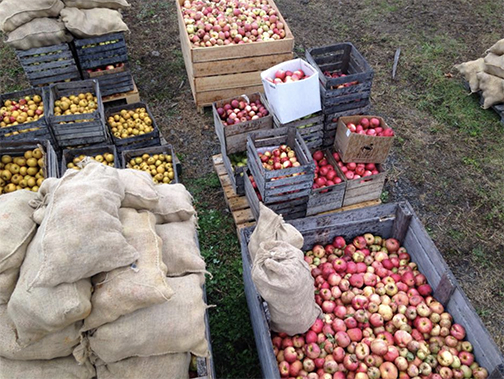 What is the the difference between East Coast and West Coast cider?
What is the the difference between East Coast and West Coast cider?
The difference between East Coast and West Coast cider, probably, if you've been to the West Coast and checked out the cider scene and then traveled around New England and the Northeast and checked out that cider scene you notice a really big difference. And I think one of the biggest defining features of the West Coast cider scene, minus what's going on in Sonoma County, I would say just pull that out of the conversation, but it's very craft-beer inspired. So cider's almost exclusively something that is flavored in some way unless it's the original version. And part of that, I think, comes from the culture, the beverage culture out there. And I think part of it comes from the fact that Washington state is the epicenter of apple production.
I mean it's the number one apple producing state in the US by a huge margin and there's just a sea of apples coming out of there. But they're dessert varieties. And so you have this resource and it's not, if you take a Gala and it was bred and selected to be crunchy and sweet and you ferment all the sugar away and it's not crunchy because it's liquid. You know what I mean? It's wanting. And so that's sort of my opinion about where that kind of flavored cider comes from.
I think on the East Coast, the growers are much smaller and there's just been much more of a focus on growing cider-specific varieties and finding the best way to express those varietal characteristics in a cider. So a lot more dry ciders and a lot more ciders that you actually know, you read on the bottle, Oh! These are the varieties in it and this is where it came from. I think a lot more of that going on in the Northeast.
And are there any, I guess, regions or countries that have influenced your cider making?
That's a really good question. Probably, the biggest influence on me has been England because I've been in the cider country there twice now. Not, I would say, so much in a sense of I want to emulate the cider that's made there or the styles of cider that's made there, but to be very profoundly influenced by seeing something that has cultural significance and cultural continuity over a long period of time and is very, very interwoven into culture, there. And that's something that I find both sobering and inspirational. So it's probably been my biggest influence.
For more on cider check out:
Eve's Cidery and the American Cider Renaissance on Grape Collective.
Find the following books on Amazon:
The Cider Revival: Dispatches from the Orchard by Jason Wilson
Ciderology: From History and Heritage to the Craft Cider Revolution by Gabe Cook














